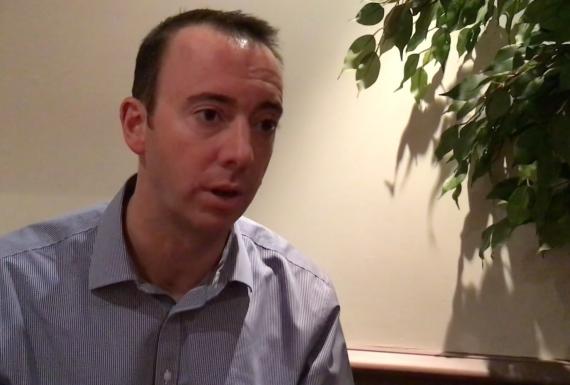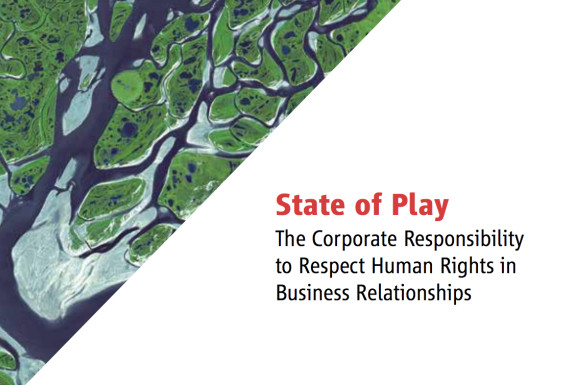Driving change across the value chain
It’s no longer enough for a company to avoid causing harm to people itself. Stakeholders – and key international standards – also expect companies to manage the human rights challenges they're involved in through their business relationships.
This can be easier said than done. Gone are the days when simple, vertically-integrated corporate groups were the norm. Many companies now have vast, complex value chains, and are embedded within extensive, multi-tiered networks of business entities. Large numbers of contractors, suppliers, service providers, clients and customers are common. And then there are relationships with licensees, franchisees, joint venture partners, syndicates, wholly and part-owned enterprises, banks and investors.
Finding practicable ways to prioritise and manage human rights challenges in a company’s business relationships is not just about respect for human rights. It’s also good for business. It helps build a more stable operating environment. Reduce disruptions and legal risk. Identify like-minded partners. And improve access to markets and capital.
What does managing business relationships look like in practice?
Ways to identify human rights risks associated with a business relationship:
- Undertake a high-level mapping of key human rights risks in the company’s value chain to help prioritise further due diligence.
- Integrate human rights considerations into merger and acquisition (M&A) and procurement processes.
- Incorporate human rights considerations into audit processes and remediation/action plans.
Ways to integrate human rights-related expectations into a business relationship:
- Use contractual negotiations and agreements to set expectations and gauge a partner's understanding of key issues.
- Ensure the company will have access to information about human rights issues – and that concerns will be heard.
- Think proactively about how to align ways of working and address any identified issues following a merger or acquisition.
Ways to address human rights issues that arise in connection with a business relationship:
- Discuss the situation with the business partner to understand the issues and develop a response.
- Offer training and capacity-building support to the business partner and build common expectations and ways of working.
- Use your company’s influence – or leverage – to encourage the business partner to address the issue (see Using Leverage for more).
What do the UN Guiding Principles say about business relationships?
The UN Guiding Principles on Business and Human Rights, or UNGPs, emphasise the importance of integrating human rights considerations into how companies manage their business relationships.
Importantly, the UNGPs adopt an expansive definition of “business relationships” that goes beyond direct, first-tier and contractual relationships. This definition includes relationships with business partners, entities in a company’s value chain and entities directly linked to the company’s operations, products or services. See the Commentary to Guiding Principle 13 for more.
Additional key guidance on managing business relationships includes:
- Companies should avoid contributing to adverse impacts and use leverage to seek to prevent or mitigate those that are directly linked to their operations, products or services by their business relationships.
- Human rights due diligence should be initiated as early as possible in the development of a new relationship, because human rights risks can be increased or mitigated at the stage of structuring contracts and may be inherited through mergers and acquisitions.
- Companies should identify general areas where the risk of adverse impacts is most significant and prioritise these for human rights due diligence where the number of entities in the value chain makes it unreasonably difficult to conduct due diligence across all entities.
- Assessments of human rights impact should be undertaken prior to entering into a new relationship and periodically through the life of the relationship.
See Guiding Principles 13 and 17 – 19 for more.
Insights from business practice
-
Integrating human rights into business relationships benefits from clear leadership and coordination
Practitioners observe that it is crucial to appoint a focal point who is able to find human rights information, promote the human rights agenda, and track relevant initiatives and decision-making across many company functions. This individual can also play an important role in coordinating the human rights-related efforts of functions and teams involved in managing the company's business relationships.
-
Effective prioritisation is key to cutting through the challenges of scale
For many large companies, undertaking extensive human rights due diligence on each business partner can be impracticable, particularly at the start of their journey. The numbers are simply too vast.
Approaches to prioritisation vary – and may reflect the characteristics of a company’s value chain. Developing a high level “heat map” of a value chain is one way to identify higher risk relationships. For one company, the most severe risks may be associated with how customers use a particular product. For another, the supply chain in a specific region of the world may present the biggest challenge.
-
Manage human rights risks throughout the lifecycle of a business relationship
Each phase of a business relationship can present new human rights risks – as well as different opportunities to manage these.
By undertaking human rights due diligence before entering into a business relationship, a company can ensure measures to address any identified risks or legacy issues are incorporated into the relationship from the outset. However, risks will need to be re-assessed periodically. Just as a company’s own operating context and risk landscape can shift, so can those of its business partners. Human rights risks should also be considered when ending or terminating a relationship, or disposing of an asset.
-
Framing human rights as an enabler, rather than an obstacle to growth, helps get traction internally
Human rights are firmly on companies’ agendas. But they compete for attention in a crowded field of issues relevant to business relationships. Getting attention on human rights in these situations can be challenging. However, companies are finding that where human rights are viewed as an enabler to growth and sustainability, it is easier to get attention and space at the table. Business development teams need to understand and take seriously the importance of managing social issues. And it helps if human rights and sustainability specialists are in turn sensitive to commercial drivers.
-
Embedding human rights in existing systems helps make respect for human rights a routine part of doing business
It also enhances efficiency and minimises duplicative processes. However, practitioners note that it's important to ensure relevant teams understand how human rights fits within existing relationship-management systems and can recognise issues. It is also important to find a balance between consistent compliance with management processes, incentivising innovation and developing a capacity to manage emerging human rights challenges.
Key functions – including procurement, legal, business development and human resources (where the company works with recruitment agencies) – may need targeted training and capacity building to be able ask the rights questions, spot red flags and help the company respond. Employees in these teams should also know what to do if risks are identified, and where to go for more information or to escalate their concerns. Some companies have found it helpful to develop a roadmap or decision tree for the company’s key types of business relationship, with guidance on risk management processes for each relationship type.
For more on building know-how, see: Raising awareness, training and building capacity
-
It's better to build capacity amongst business partners than simply require compliance with a code of conduct
Companies are increasingly supporting business partners to develop their own management systems and capability to operate with respect for human rights. They recognise that the partner will be better able to manage human rights-related challenges have their own know-how. However, this takes time, and it can be helpful to have mechanisms and touch-points to track business partners’ performance.
-
Use leverage to drive change across the value chain
Companies can use their influence in business relationships to address some of the most complex, intractable and systemic business-related human rights challenges – as well as more straightforward ones. Putting this into practice effectively can be difficult, but offers an opportunity to achieve real and sustained outcomes for affected people.
In addition to acting alone, companies are increasingly working to build industry or country-specific initiatives to take a more collaborative approach to solving shared challenges. This approach can significantly enhance their leverage in situations where an individual company may lack sufficiently significant influence in a relationship. This may include engagement with government authorities and regulatory bodies in some instances.
For more, see Using Leverage
Looking forward: Embedding respect in global value chains
Managing human rights challenges in business relationships is key to how a company implements its own responsibility to respect human rights. It’s also a way in which leading companies raise the bar amongst their peers and partners, and build common standards.
Places to start include:
Strengthening shared understanding of complexities: We need to better understand the complexity of global value chains and business relationships. Could each industry develop an infographic showing a typical value chain to help everyone understand how that industry works? See how Trafigura approached this in Commodities Demystified: A Guide to Trading and the Global Supply Chain.
Overcoming challenges of scale and complexity: We all know that it’s not as easy as cascading expectations down a supply chain. New ways of thinking and collaborating are needed to more effectively identify risks - and generate commitment to respect for human rights across the value chain. We can build on lessons and insights from industry-level collaborations and the efforts of individual companies.
Focusing on trust-building with business partners: In discussions about how to integrate respect for human rights into business relationships, there is often – importantly – a strong focus on processes, prioritisation and tools. However, practitioners consistently emphasise that the trust that exists (or doesn’t) between a company and its business partners is a critical factor in achieving outcomes.










 Download PDF
Download PDF